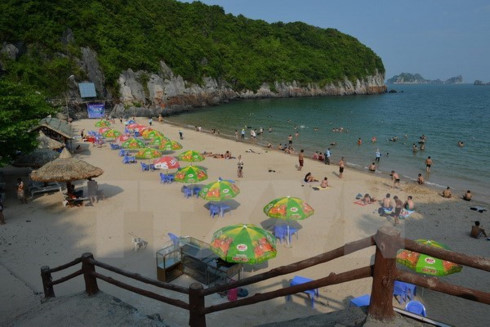
Tourism development in the coming time must focus on improving quality of products to obtain sustainable development and high competitiveness.

Deputy Minister of Culture, Sports and Tourism Huynh Van Ai made
the statement at a workshop in Hanoi on August 29.
He said Vietnam’s tourism has seen strong growth in recent years
with the reception of 10 million international tourists and over 62 million
domestic holiday makers in 2016. The total revenue was estimated at over VND400
trillion (US$17.6 billion).
In 2017, Prime Minister Nguyen Xuan Phuc has set the target of
attracting 13 million -15 million foreign visitors and posting year-on-year
growth of 30-50%, he said.
This is an ambitious goal, which requires
maximum efforts of all sectors and people to turn the tourism sector into a
spearhead economy.
Head of the Vietnam National Administration
of Tourism Nguyen Van Tuan said Vietnam served over 8.47 million overseas
holidaymakers in the first eight months of 2017.
According to the evaluation of the World
Economic Forum for 2015-2017, Vietnam’s tourism competitive edge increased
eight places to rank 67 out of the 136 global economies.
The
country is moving to build itself as a safe and environmentally-friendly
destination to lure more visitors both at home and abroad in the future.
Source: VNA
A diverse chain of eco-tourism and resort destinations concentrated in Hoa Binh city and the districts of Tan Lac, Da Bac, and Luong Son… Along with the launch of several key high-quality resort tourism projects, these developments have reshaped the landscape and enhanced the appeal of Hoa Binh as a travel destination.
Boasting diverse terrain, a mild climate, and rich natural resources, Cao Phong district is increasingly asserting its place on Vietnam’s tourism map, attracting both domestic and foreign visitors. The district is renowned for its stunning landscapes, majestic mountains, a crystal-clear hydropower lake, and the unique cultural identity of local ethnic groups.
With its pristine landscapes, unique cultural heritage of Muong ethnic minority, and an expanding range of visitor experiences, Tan Lac district of Hoa Binh has fast become a captivating destination for both domestic and international tourists.
Until now, Sung village in Cao Son commune, Da Bac district remains the only Dao ethnic community in Hoa Binh province to develop a community-based tourism model. Beyond its untouched natural landscapes, cultural identity serves as the cornerstone attraction for visitors.
Alongside the diverse cultural identities of the Kinh, Muong, Tay, Thai, Dao, and Mong ethnic people, Hoa Binh province is also renowned as the "capital" of the northwestern Vietnamese cuisine, offering unique and distinctive dishes. At festivals, during Lunar New Year (Tet), or on significant family or community occasions, special dishes are prepared, leaving a lasting impression on visitors.
A Phong Linh (Yellow Tabebuia) flower garden in Thang village, Thach Yen commune, Cao Phong district is currently in full bloom, drawing a large number of visitors.



